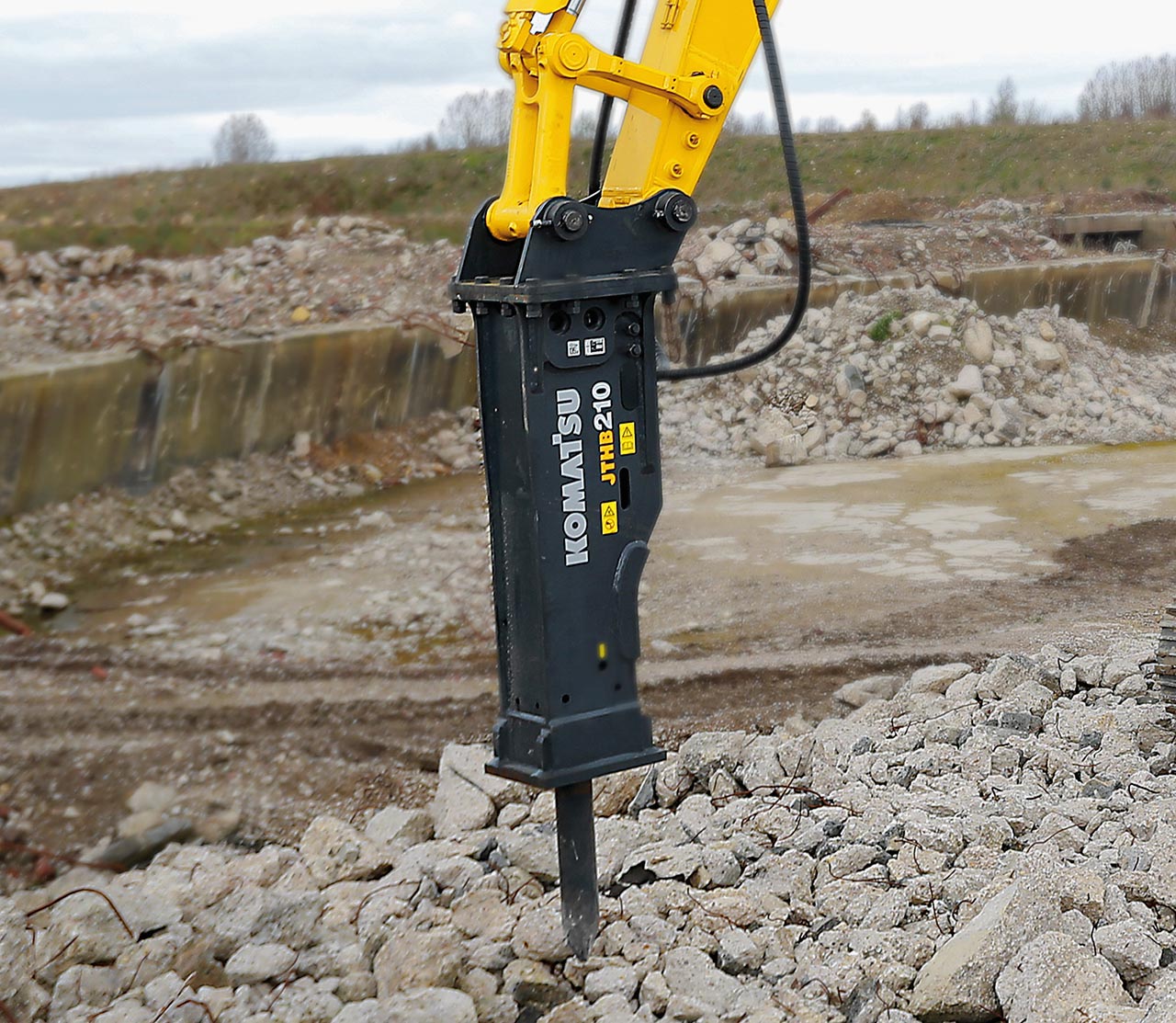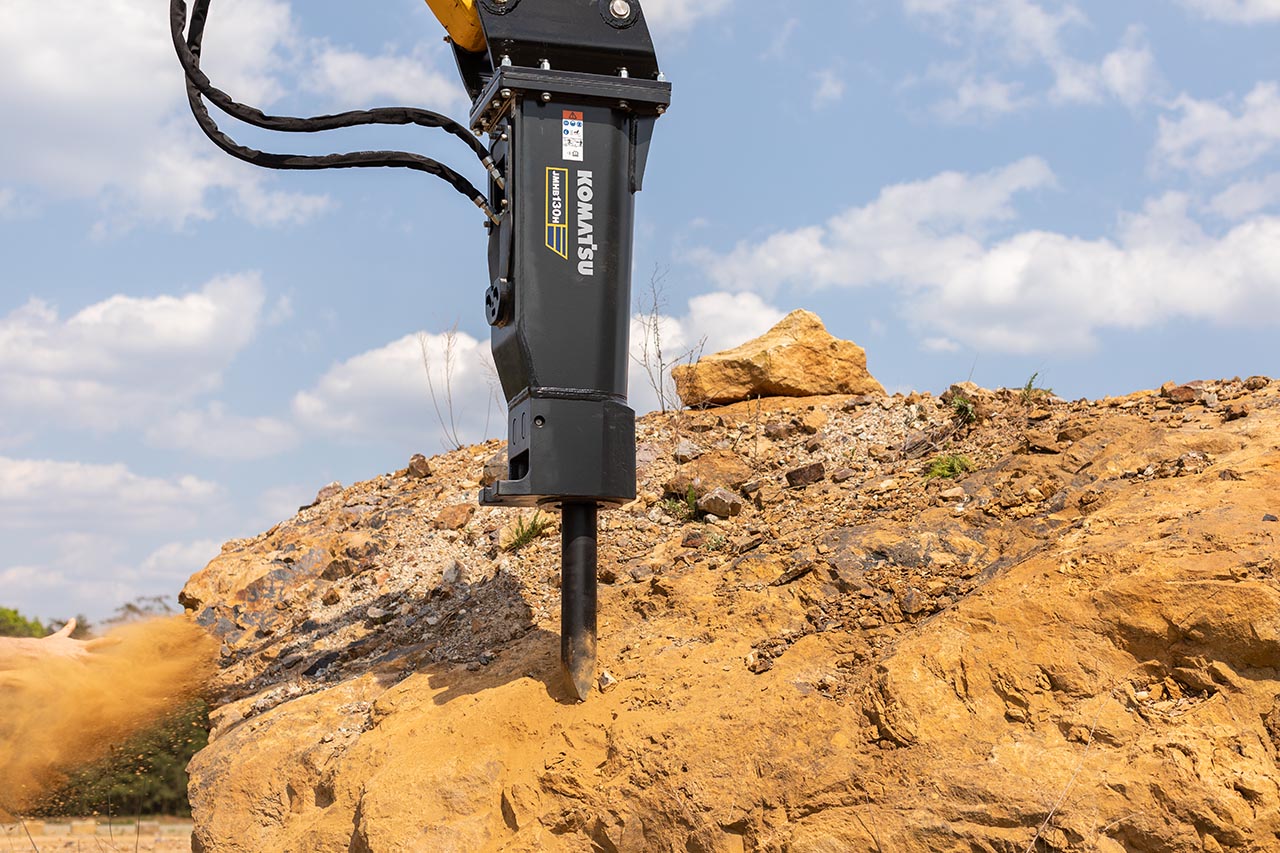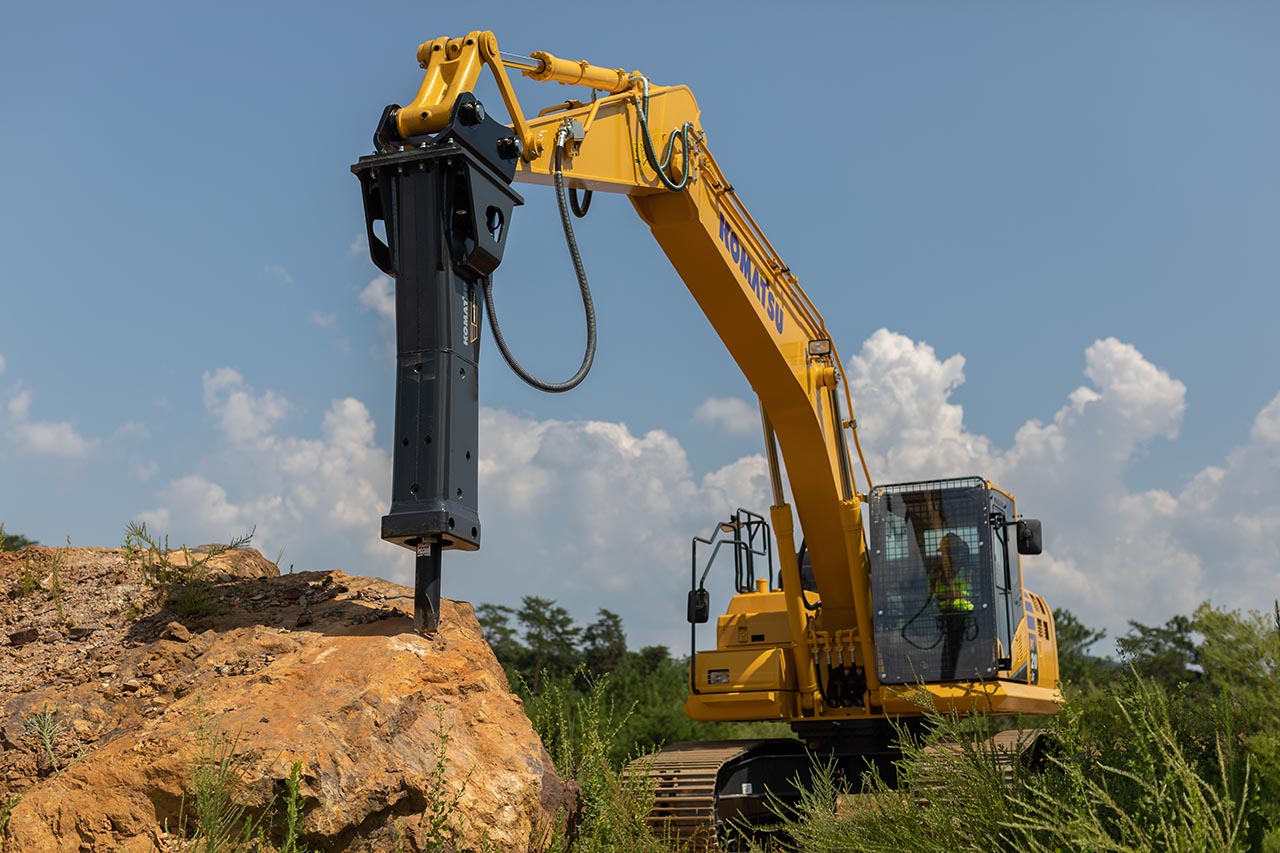Attachments
Hydraulic breakers
Achieve excellent impact energy in a variety of rock and concrete demolition applications and get exceptional performance and efficiency whether you’re scaling a tunnel, running a pedestal-boom on a quarry, or tearing out reinforced concrete abutments.
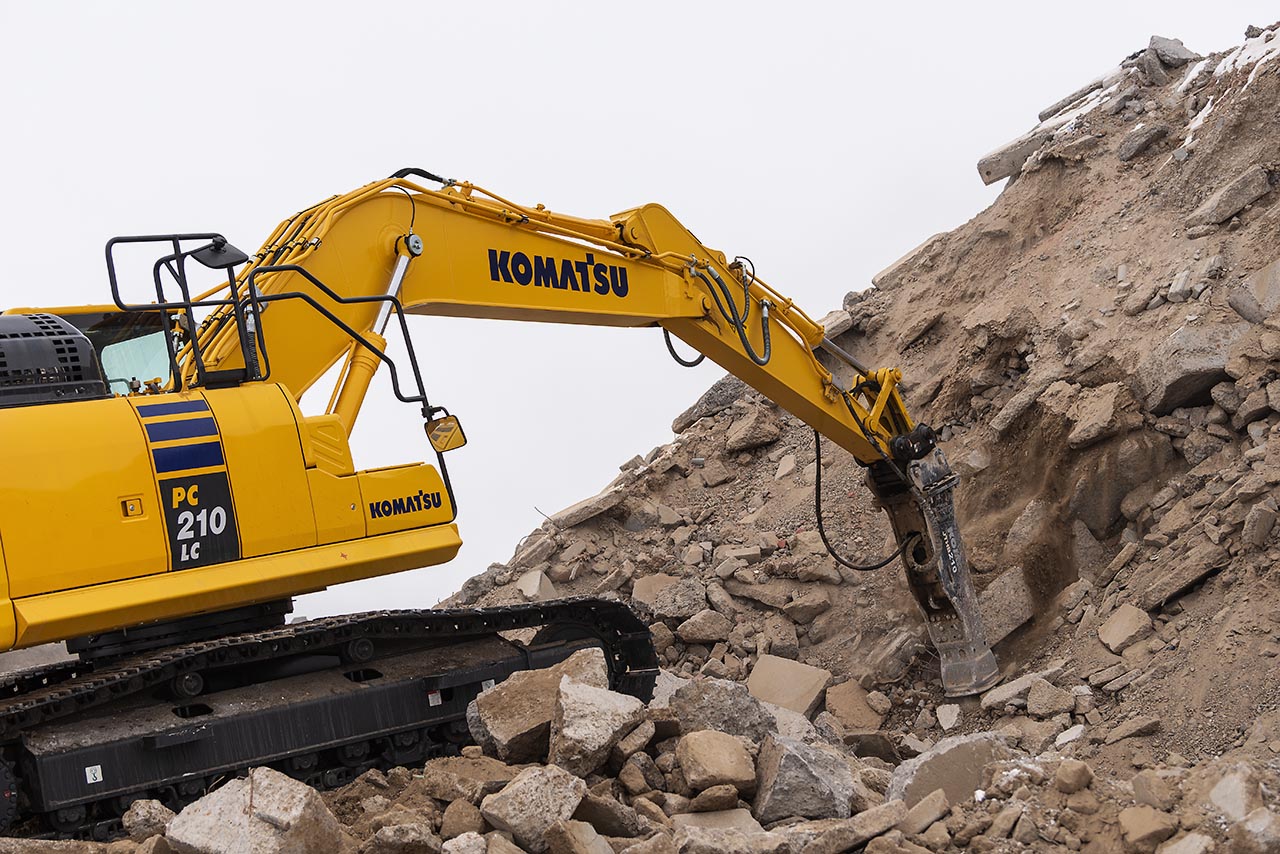
Choosing the right breaker attachment for your job
Learn how selecting the right hydraulic breaker attachment can make or break your job. Whether you’re scaling a tunnel, running a pedestal-boom on a quarry, or tearing out reinforced concrete abutments, these tips will help you choose the right size breaker.
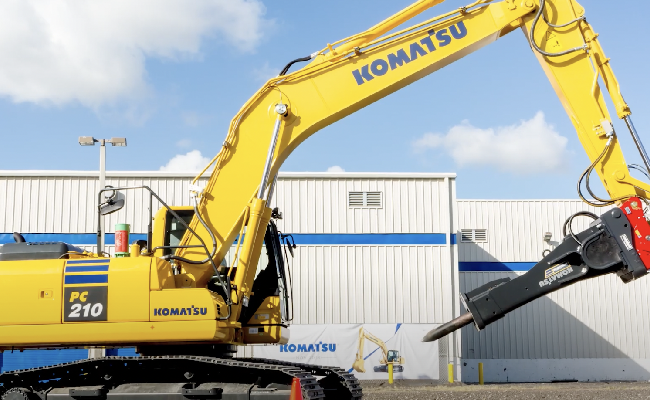
Video gallery
Promote zero harm when using hydraulic breakers
Driving toward the goal of zero harm when operating hydraulic breakers relies on a safety-minded focus on three critical factors — installation, the working area and operating considerations. Explore these three safety-related variables and learn some practical tips that can help protect your job site crew, keep your operation humming and avoid damage to your hydraulic breaker investment.
Learn two hydraulic breaker performance factors tips from Komatsu
Get the most out of your hydraulic breaker while avoiding damage and downtime with proper positioning and the correct applied pressure. These two factors are crucial to ensure peak performance from your hydraulic breakers while helping to prevent downtime from damage to internal components and working tools. Discover the key to positioning and applied pressure, as well as two practical tips for breaking materials effectively.
Four tips to reduce hydraulic breaker blank-firing
Blank-firing is one of the most damaging actions to your hydraulic breaker. Although blank-firing can’t be avoided 100 percent of the time, there are techniques, tips, training and technology that can help minimize these costly operator errors. Discover four practical tips that can help you avoid blank-firing, maximize uptime and boost the longevity of your hydraulic breakers.
Eight great tips for your Komatsu hydraulic breakers so they work effectively and efficiently
The hydraulic breakers on your excavator work hard and need to be looked after if you want them to be effective. Which is why Komatsu has provided eight great tips that can help keep your breakers productive so you can get the job done. Want to avoid blank firing? Want more longevity out of your hydraulic breakers? Check out the video.
Before and after tips when installing your Komatsu hydraulic breakers
When you need a hydraulic breaker for heavy-duty jobs in quarries, mines, trenching and construction demolition, it's important to follow these before and after installation tips to help you avoid internal damage and failure. Get information on prep work, protective gear, proper working modes and the tools you need to help your attachments run as effectively and efficiently as possible.
Need a weekly maintenance routine to perform on your Komatsu hydraulic breakers?
After working hard for 40-hours, the hydraulic breaker on your excavator needs a weekly maintenance check to help minimize long-term costs and keep your operation running smoothly by reducing unplanned downtime. Weekly maintenance checks are also an effective way to help improve your machine’s longevity and identify potential problems before they escalate into bigger issues.
Daily visual inspections to help maintain your Komatsu hydraulic breakers
Maintaining your excavator’s hydraulic breakers with a daily visual inspection plan can be a simple way to help you reduce project delays and promote safety at your site. These daily visual inspections are also an effective way to help improve your machine’s longevity and reduce the costs of unplanned downtime and parts replacement. Here are some routine maintenance tips to consider before you start working with the hydraulic breakers on your excavator.
Explore hydraulic breaker lubrication systems — tips from Komatsu
Lubrication for your hydraulic breakers is essential to avoid damage from steel-on-steel contact and devastating corrosion from contaminants infiltrating the cradle housing. A lubrication system that automatically dispenses the right amount of lube at the right frequency can be mounted on your hydraulic breaker cradle or the carrier of your machine. Explore the pros and cons of each system to help you make the right choice for your fleet and job site needs.
Discover the right tools to use for hydraulic breakers tips from Komatsu
Your hydraulic breakers offer the versatility of different tool attachments, each designed for specific applications or materials. Discover the essential tools that can help you get the job done on most work sites, including a summary of the intended purpose of each hydraulic breaker tool. Plus, you’ll learn the eleven factors or operating errors to avoid that can damage your hydraulic breaker tools.
Tips to storing your Komatsu hydraulic breakers properly
Properly storing your excavator’s hydraulic breakers can help you avoid contamination and reduce oil leaks. It’s also an effective way to help improve your machine’s longevity and reduce the costs of unplanned downtime and unnecessary replacement. Here are some practical tips to consider when you’re storing your hydraulic breakers.
